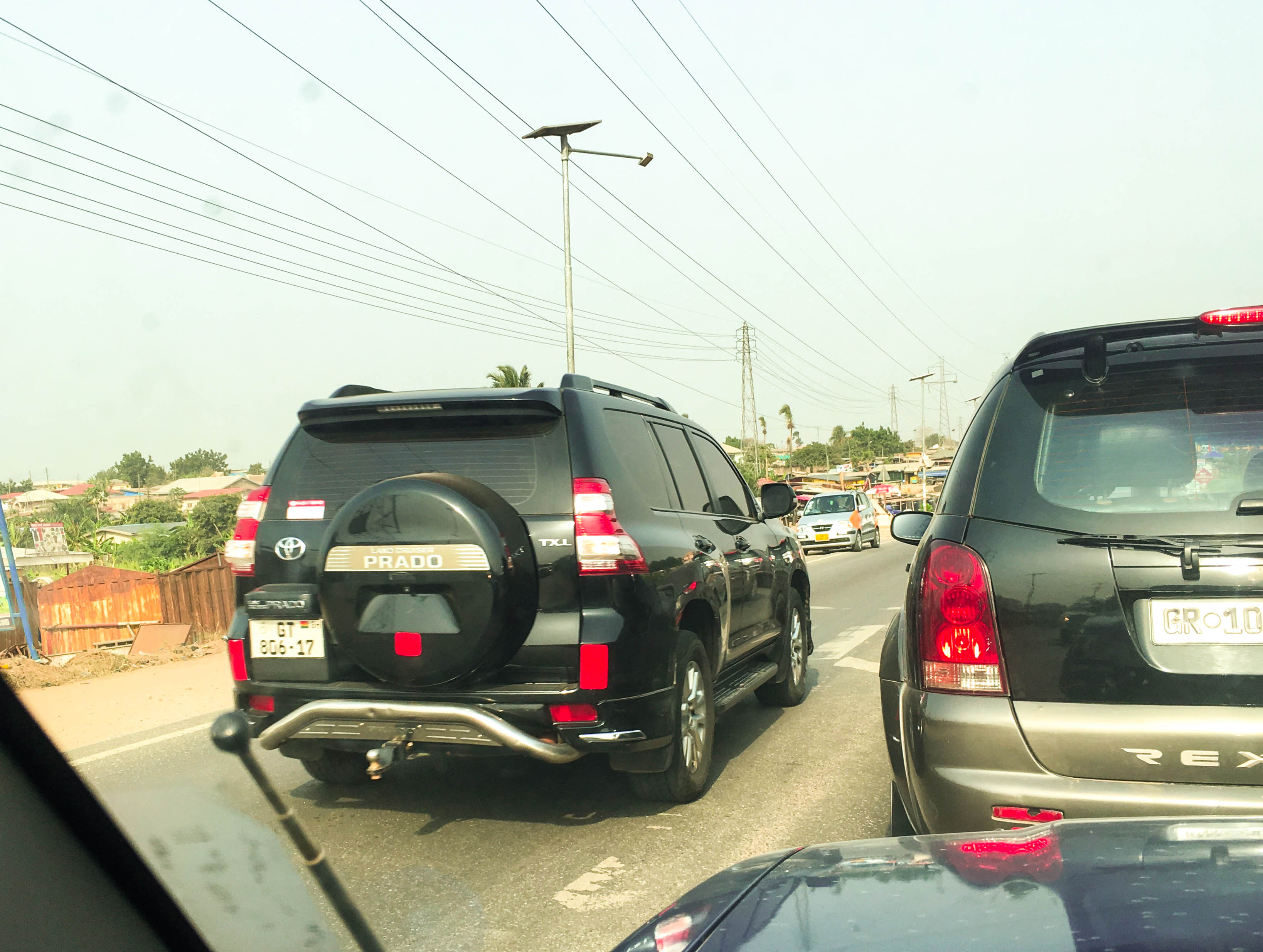Having been born and raised in Cape Coast for almost twenty years in addition to having my secondary education in that great College has imposed a certain obligation of having to trek to the ancient town from Accra on countless occasions. For instance, I recollect having to do the Accra-Cape Coast route over fifty times in 2014 and 2015 when, as the Year Group Leader for my mates, I had the onerous responsibility of leading my mates to host the College’s Anniversary as well as undertake a befitting legacy project, all in addition to national alumni responsibilities.
Thus, driving along that route had become as routine for me as driving to work each week day. Over time, I had gotten used to all the bends, wide speed tables, rumble strips, ‘Toyota’ warnings about accident spots, narrow bridges, street side foodstuff vendors, etc. I had become accustomed to the sight of vehicular accidents, very fresh in some cases, one of which I had to park and help rescue the injured in two saloon vehicles. Anytime, I drove along the stretch, I could have a mental picture of which accident had occurred at an spot anytime I got to one. In spite of all of these, I had never been struck by an accident as much as what I witnessed last Saturday.
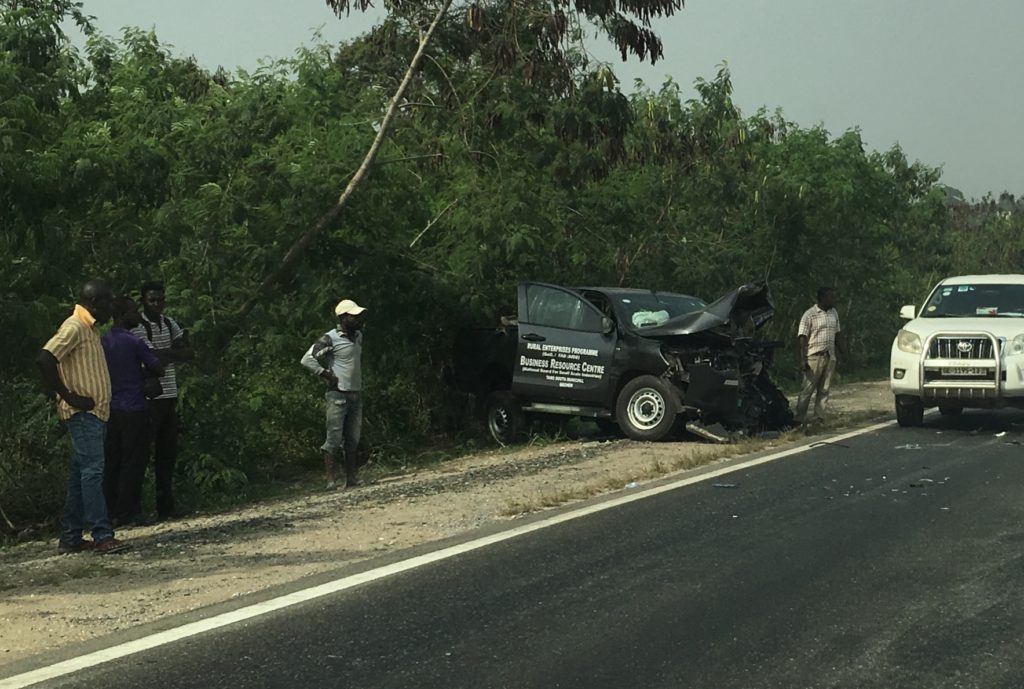
I had attended the funeral of a former University Professor of international repute and Statesman in Cape Coast. The funeral lived up to its billing – very solemn and reflective of life and had the country’s Vice-President, some current and former Ministers of State and MPs in attendance as well as a large crowd of the religious. I left back for Accra at about 1.00pm and was enjoying my return journey until I got to the Gomoa Potsin area. Quite unlike that time of the day, there was a huge vehicular traffic on the Accra-bound side.
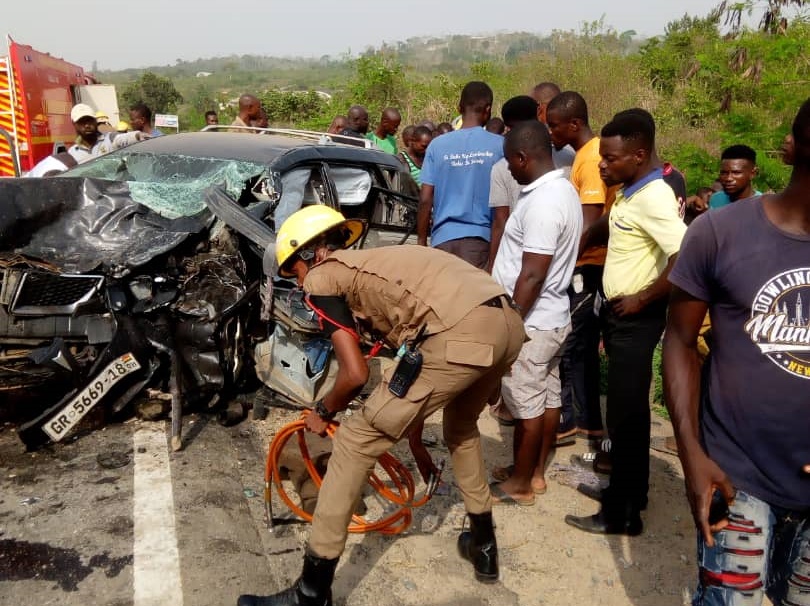
As we painstakingly inched forward, the cause of the traffic became clear – a Toyota Hilux pick-up vehicle and a Pontiac Vibe saloon car had been involved in an accident. Both vehicles had gotten their engines completely crashed and mangled like a milk tin used for a game of ‘chaskele’. Additionally, all the airbags of the salon car which appeared quite new had all been blown up with the two doors by the driver’s side completely grazed and shattered. Clearly the impact of the crash was that massive. As I got closer, I noticed from the exposed elbow of the driver still stuck helplessly in the vehicle, that the accident was fresh. Fortunately, there were policemen, Ambulance Service staff and some volunteers there to assist in the evaluation.
Up until this point from Cape Coast, vehicles (especially of the newer models) dangerously outpaced themselves on the highway as though there was a Ferrari prize at the Weija Toll Plaza for the first driver to pick up. Well, after the accident scene, these same vehicles were now driving reasonably, extra cautious and all.
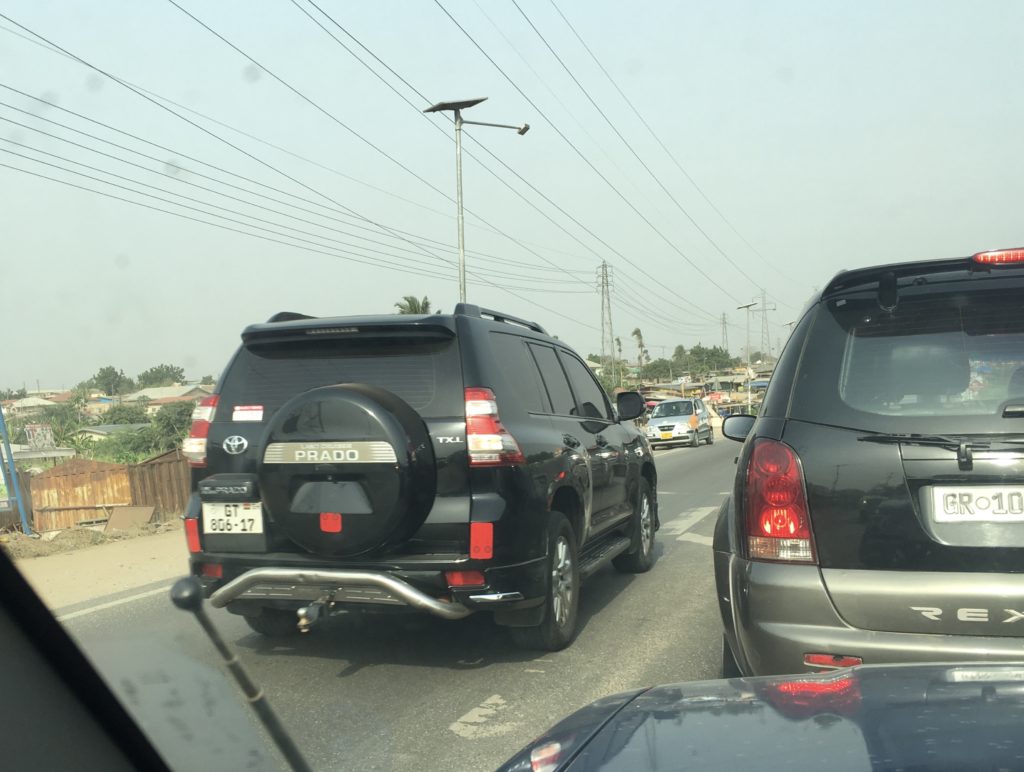
As I reflected on this scenario, I knew there and then that the average Ghanaian driver knew exactly what the road traffic rules were but deliberately chose to observe them when they want to. My dear friend, how many times have we not been given highlights (high beam) by oncoming vehicles as an alert sign that the Police were ahead so we should slow down to avoid being caught by the speed gun? And then, all of a sudden, all cars hitherto doing 120-140kph begin to do 60kph until we’ve gone past the Police check and then off we go – back to 120kph.
As we got to the Gomoa Buduburam area where some light traffic had started to build up, all indiscipline broke loose. That stretch from the Potsin all the way to the Weija Toll Plaza is a typically constant traffic prone and extent of the traffic is mainly dependent on the time of day from about 1.00pm and 8.00pm. On a day when we had witnessed a major accident, I had expected some decorum from drivers but no! They had just so soon forgotten about the very gory accident we had all witnessed and were back at their recklessness. There were those who thought they could not wait in the traffic and used the road shoulders or using other routes after which they attempt to re-join the highway at other points. As irregular as their conduct were, there were others whose conduct was downright obscene.
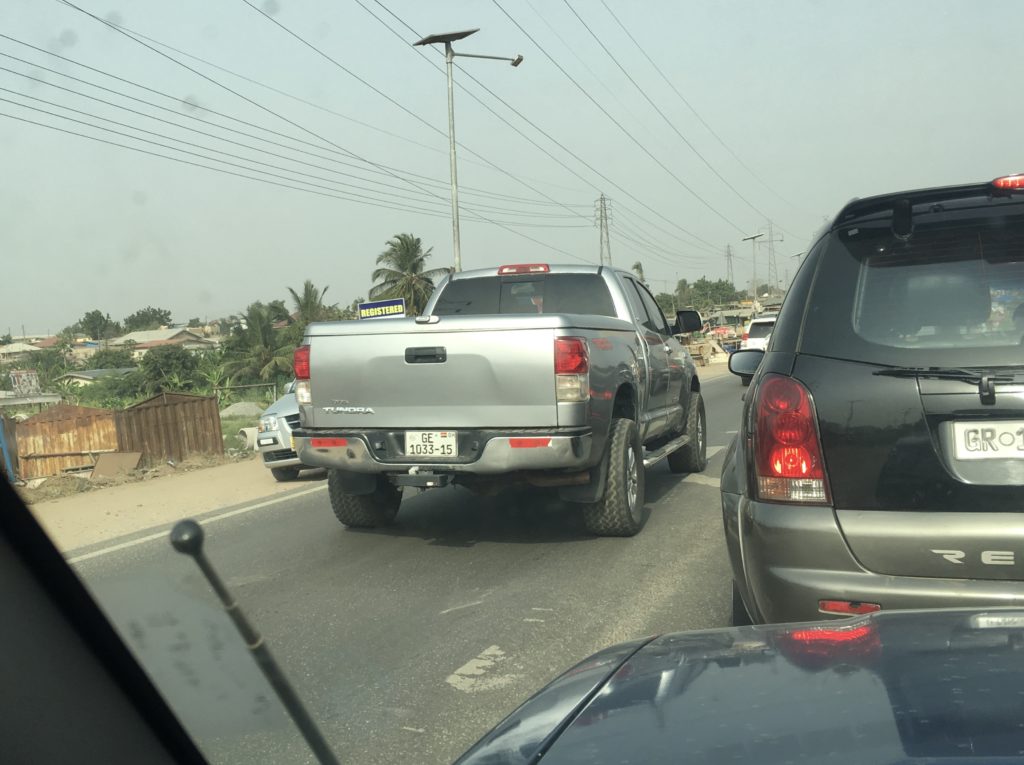
Again, long convoys of supposed high and mighty people blurring out Police and National Security sirens and mostly driving in the opposite directions at abnormally high speeds is a routine phenomenon on this stretch. Sometimes, a driver rightfully in the oncoming lane is forced to swerve off the road to allow some reckless driver space in order to avoid collision. So common has it become that, commuters have virtually come to terms with it. Once a while, you’d get a daring driver who’d refuse to allow these shameless political juggernauts and money bags the opportunity to have their way. Interestingly in such instances, they succumb and follow the traffic until someone else allows them to have their way and off they go. By such sheer recklessness, many an innocent bystander, commuter, street hawker have been killed needlessly. Decades ago as a primary school pupil in a primary school located along the Cape Coast-Takoradi highway, I witnessed a number of school pupils and hawkers knocked down because of reckless driving by road users. On most occasions, these innocent victims actually died.
While at it, my dear friend, have you realized that most drivers in our part of town hardly appreciate the coding for the separation markings on our roads? By way of small education, the Broken White Line of equal breaks imply that a driver may change lanes if it is safe to do so.
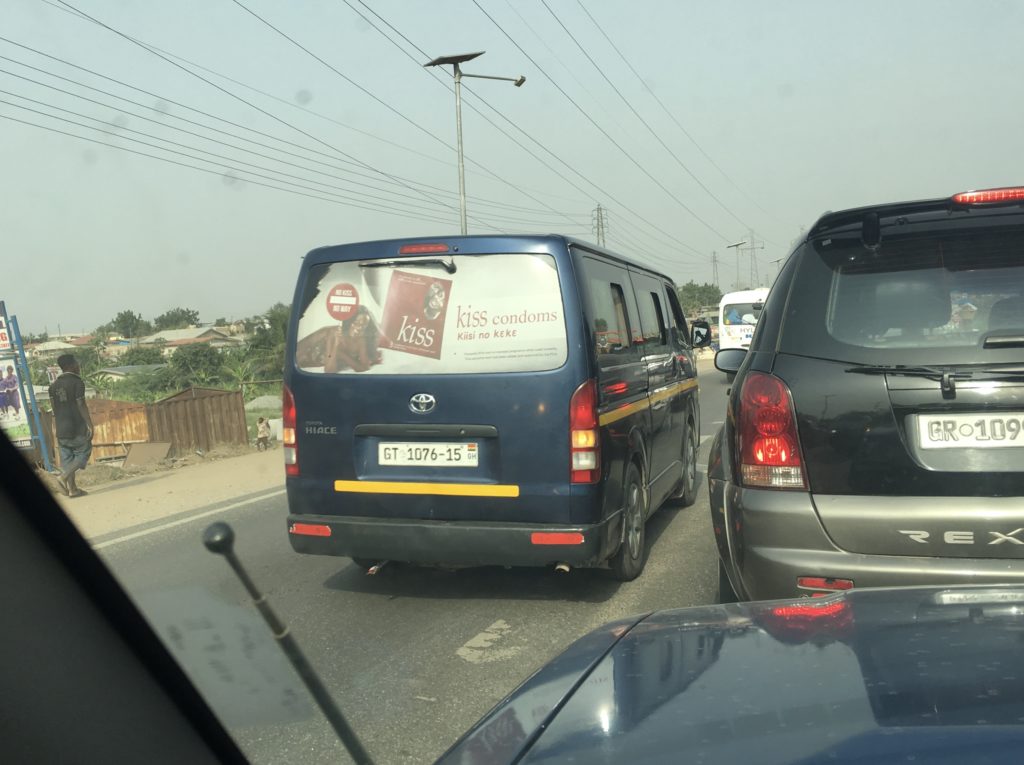
The longer the white line shows in a broken line, the more unsafe, overtaking at those points are, thus unadvisable. The Solid White Line separating the road lanes implies that there’s the need to stay within the lane due to the nature of the road or other present factors. Internationally, the Yellow Lines are supposed mark the center of a two-way road used for two-way traffic but unfortunately we here use only white, for reasons I cannot conjecture. A road user may however pass on a two-way road if the yellow centerline is broken. Clearly from the way our drivers operate on the roads, I’d be very pleasantly surprised if even 50% know about these.
The other challenge on our roads is that once an oncoming driver activates the trafficator (indicator lights), he or she assumes that it confers an automatic right of way. For all of us, the trafficator is supposed to indicate that all other factors proving fine, you intend to overtake the immediate vehicle ahead of you. Once you don’t see any objection, you then proceed. What we however see here is that immediately the trafficator is activated, the driver is making that move…How?
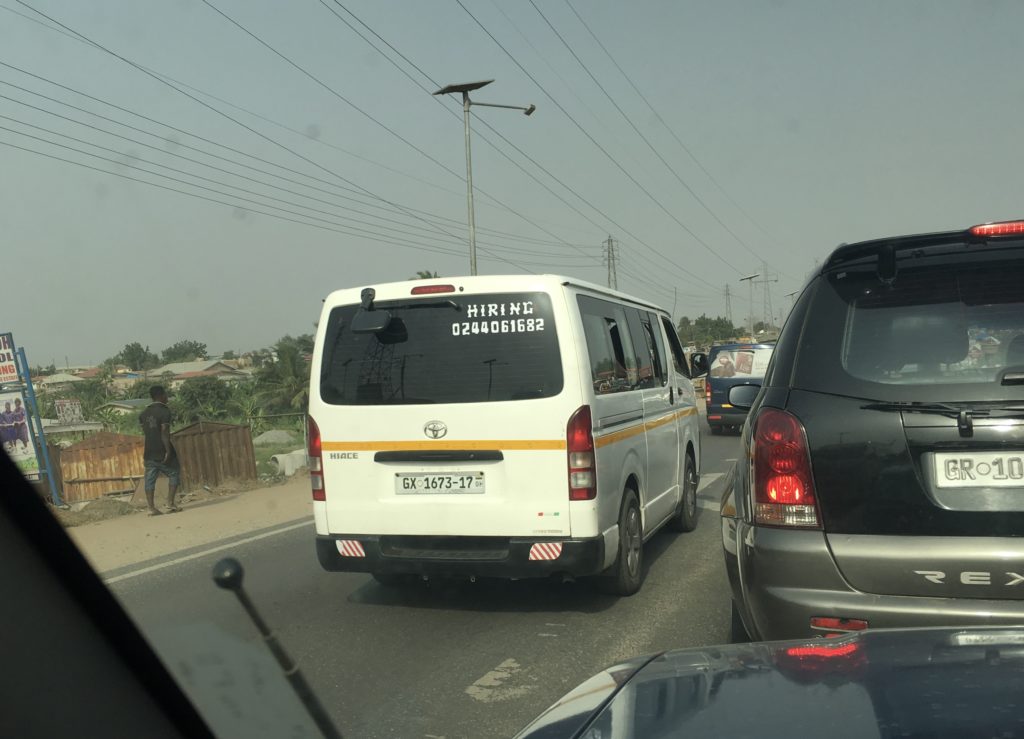
Considering that the road architecture along the Accra-Cape Coast has several villages and towns straddling both sides of the road and whose livelihoods is heavily hinged on same. Thus, it is important that the design of roads of such nature are undertaken bearing this in mind. Finally, upon a careful observation of the nature of traffic along the road, I am of the view that re-surfacing of the highway between Kasoa and Gomoa Dawurampong junction would go a very long way in ensuring the free flow of traffic. You’d have noticed my dear friend, that rather than dealing with the problem of vehicular traffic, the construction of the Kasoa Interchange only succeeded in shifting the traffic from Kasoa to the Awutu Senya area.
In 2018, it was reported that about 2007 people lost their lives in vehicular accidents along that Accra-Cape Coast road alone. It’s about time that pragmatic steps were taken to address the troubles along the Accra-Cape Coast highways in addition to all others very seriously.

My dear friend,

